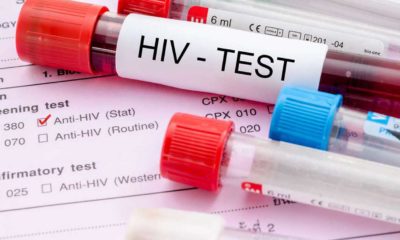Sci & Tech
Scientist Discover A New HIV-1 Group M Virus Subtype

Abbott Laboratories, an American medical Devices and Health Care Company with headquarters in Abbott Park, Illinois, United States’s team of scientists and researchers have identified a new subtype of HIV, dubbed HIV-1 Group M, subtype L.
In a publication by the Journal of Acquired Immune Deficiency Syndromes (JAIDS), the findings show the role next-generation genome sequencing is playing in helping researchers stay one step ahead of mutating viruses and averting new pandemics.
Since the beginning of the global AIDS pandemic, 75 million people have been infected, despite formidable challenges, the global health community has been tirelessly working on the goal to end HIV pandemic over the past few decades. Their efforts are becoming feasible as the records indicate that 37.9 million people today are currently living with the lethal virus.
“In an increasingly connected world, we can no longer think of viruses being contained in one location. This discovery reminds us that to end the HIV pandemic, we must continue to outthink this continuously changing virus and use the latest advancements in technology and resources to monitor its evolution,” said Carole McArthur, Ph.D., M.D., a professor in the departments of oral and craniofacial sciences, University of Missouri — Kansas City, and one of the study authors.
This research marks the first time a new subtype of “Group M” HIV virus has been identified since guidelines for classifying new strains of HIV were established in the year 2000.
Group M viruses, which are traced back to the Democratic Republic of Congo (DRC) in Sub-Saharan Africa, are responsible for the global HIV pandemic.
To determine whether an unusual virus is, in fact, a new HIV subtype, three cases must be discovered independently.
The first two samples of this subtype were discovered in DRC in the 1980s and the 1990s. The third, collected in 2001, was difficult to sequence at that time because of the amount of virus in the sample and the existing technology.
Today, next-generation sequencing technology allows researchers to build an entire genome at higher speeds and lower costs. In order to utilize this technology, Abbott scientists developed and applied new techniques to help narrow in on the virus portion of the sample to fully sequence and complete the genome.
“Identifying new viruses such as this one is like searching for a needle in a haystack. By advancing our techniques and using next-generation sequencing technology, we are pulling the needle out with a magnet. This scientific discovery can help us ensure we are stopping new pandemics in their tracks,” said Mary Rodgers, Ph.D., a principal scientist and head of the Global Viral Surveillance Program, Diagnostics, Abbott, and one of the study authors.
Abbott, the leader in blood screening and infectious disease testing created its Global Viral Surveillance Program 25 years ago to monitor HIV and hepatitis viruses and identify mutations to ensure the company’s diagnostic tests remain up to date.
The US-based Abbott in partnership with global blood centers, hospitals, and Academic Institutions has collected over 78,000 samples of HIV+ and Hepatitis Viruses from 45 countries.
Abbott has also identified and characterized more than 5,000 strains and published 125 research papers, all that has been tapped to be useful in helping the scientific community learn more about these pernicious viruses.
Kenya Insights allows guest blogging, if you want to be published on Kenya’s most authoritative and accurate blog, have an expose, news TIPS, story angles, human interest stories, drop us an email on [email protected] or via Telegram
-

 News4 days ago
News4 days agoTemporary Reprieve As Mohamed Jaffer Wins Mombasa Land Compensation Despite Losing LPG Monopoly and Bitter Fallout With Johos
-

 Business2 weeks ago
Business2 weeks agoPanic As Payless Africa Freezes With Billions of Customers Cash After Costly Jambopay Blunder
-

 Investigations1 week ago
Investigations1 week agoHow SportPesa Outfoxed Paul Ndung’u Of His Stakes With A Wrong Address Letter
-

 Investigations4 days ago
Investigations4 days agoFrom Daily Bribes to Billions Frozen: The Jambopay Empire Crumbles as CEO Danson Muchemi’s Scandal-Plagued Past Catches Up
-

 News2 weeks ago
News2 weeks agoSCANDAL: Cocoa Luxury Resort Manager Returns to Post After Alleged Sh28 Million Bribe Clears Sexual Harassment and Racism Claims
-

 Sports3 days ago
Sports3 days ago1Win Games 2025: Ultimate Overview of Popular Casino, Sports & Live Games
-

 Investigations1 week ago
Investigations1 week agoInside the Deadly CBD Chase That Left Two Suspects Down After Targeting Equity Bank Customer Amid Insider Leak Fears
-

 Business4 days ago
Business4 days agoHass Petroleum Empire Faces Collapse as Court Greenlights KSh 1.2 Billion Property Auction
































